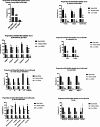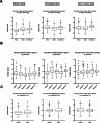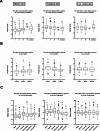Exploratory dietary patterns, the global diet quality score, and their associated socio-demographic factors among young adults in Rwanda: a cross-sectional study using a food list-validated, semi-quantitative food frequency questionnaire
- PMID: 39543676
- PMCID: PMC11566664
- DOI: 10.1186/s12986-024-00859-z
Exploratory dietary patterns, the global diet quality score, and their associated socio-demographic factors among young adults in Rwanda: a cross-sectional study using a food list-validated, semi-quantitative food frequency questionnaire
Abstract
Background: Economic growth in Rwanda is associated with significant changes in food systems, access to health and other services, lifestyle, and nutritional transitions. Nevertheless, our knowledge of dietary patterns in Rwanda remains limited. The present study aimed to identify the dietary habits of young adult population in Rwanda and to assess associated factors.
Methods: A developed and validated semi-quantitative food frequency questionnaire covering a one-year period was used to collect data on food intake of 1,218 participants (18-35 years old) from end of January to April 2023 in a cross-sectional study. Dietary habits were assessed using two indicators: the Global Diet Quality Score (GDQS) and dietary patterns. The latest was developed using exploratory factor analysis.
Results: Rwandan adults had a mean GDQS of 24.1; 64.4% had high GDQS, especially urban, and educated respondents. The Southern province led at 77.4%. Three dietary patterns were identified: "Modern" (high in processed foods and drinks), "Traditional" (rich in cereals, roots, and plant-based proteins), and "low variety" (low in diverse foods but high in sugar and salt). Dietary patterns significantly varied by residency, province, sex, age, social category, asset, and education level.
Conclusion: This study identified distinct dietary patterns among adult population of Rwanda, suggesting a nutritional transition associated with urbanization. The findings highlight the need for further research into the relationships between diet, obesity, and metabolic syndrome in Rwandan population.
Keywords: Dietary patterns; Exploratory Factor Analysis; Food frequency questionnaire; Global Diet Quality score; Rwanda; Urbanization.
© 2024. The Author(s).
Conflict of interest statement
Figures



Similar articles
-
The global diet quality score (GDQS) of foods consumed by Nigerian adults.J Health Popul Nutr. 2025 Mar 8;44(1):69. doi: 10.1186/s41043-025-00764-y. J Health Popul Nutr. 2025. PMID: 40057720 Free PMC article.
-
Performance of the Global Diet Quality Score (GDQS) App in Predicting Nutrient Adequacy and Metabolic Risk Factors among Thai Adults.J Nutr. 2023 Dec;153(12):3576-3594. doi: 10.1016/j.tjnut.2023.10.007. Epub 2023 Oct 14. J Nutr. 2023. PMID: 37844842 Free PMC article.
-
Dietary glycation compounds - implications for human health.Crit Rev Toxicol. 2024 Sep;54(8):485-617. doi: 10.1080/10408444.2024.2362985. Epub 2024 Aug 16. Crit Rev Toxicol. 2024. PMID: 39150724
-
A higher global diet quality score is associated with lower risk of obesity among male university students in Lebanon: a pilot study.Front Nutr. 2024 Dec 6;11:1479448. doi: 10.3389/fnut.2024.1479448. eCollection 2024. Front Nutr. 2024. PMID: 39713783 Free PMC article.
-
Indicators for the evaluation of diet quality.Nutr Hosp. 2015 Feb 26;31 Suppl 3:128-44. doi: 10.3305/nh.2015.31.sup3.8761. Nutr Hosp. 2015. PMID: 25719781 Review.
Cited by
-
Association between nutrition literacy and diet quality among adolescents and young adults in the rural district of Mayuge, Eastern Uganda.BMC Public Health. 2025 Jul 3;25(1):2335. doi: 10.1186/s12889-025-23498-2. BMC Public Health. 2025. PMID: 40611004 Free PMC article.
References
-
- Ambikapathi R, Schneider KR, Davis B, Herrero M, Winters P, Fanzo JC. Global food systems transitions have enabled affordable diets but had less favourable outcomes for nutrition, environmental health, inclusion and equity. Nat Food. 2022;3:764–79. - PubMed
-
- Phillips L. Food and globalization. Annu Rev Anthropol. 2006;35:37–57.
-
- Black E. Globalization of the food industry: Transnational food corporations, the spread of processed food, and their implications for food security and nutrition. 2016.
-
- HLPE: Nutrition and Food Systems. A Report by the High Level Panel of Experts on Food Security and Nutrition of the Committee on World Food Security. 2017, 152.
LinkOut - more resources
Full Text Sources
Miscellaneous

